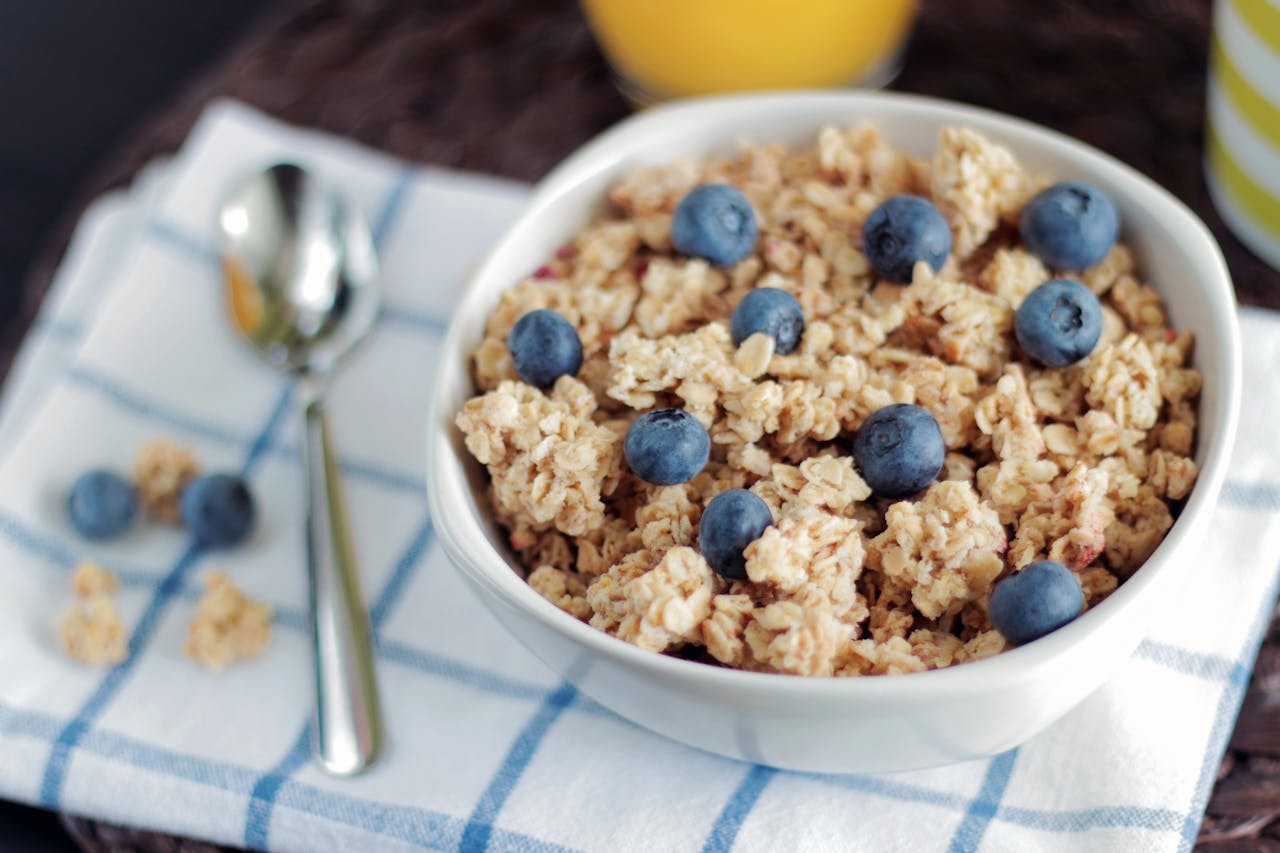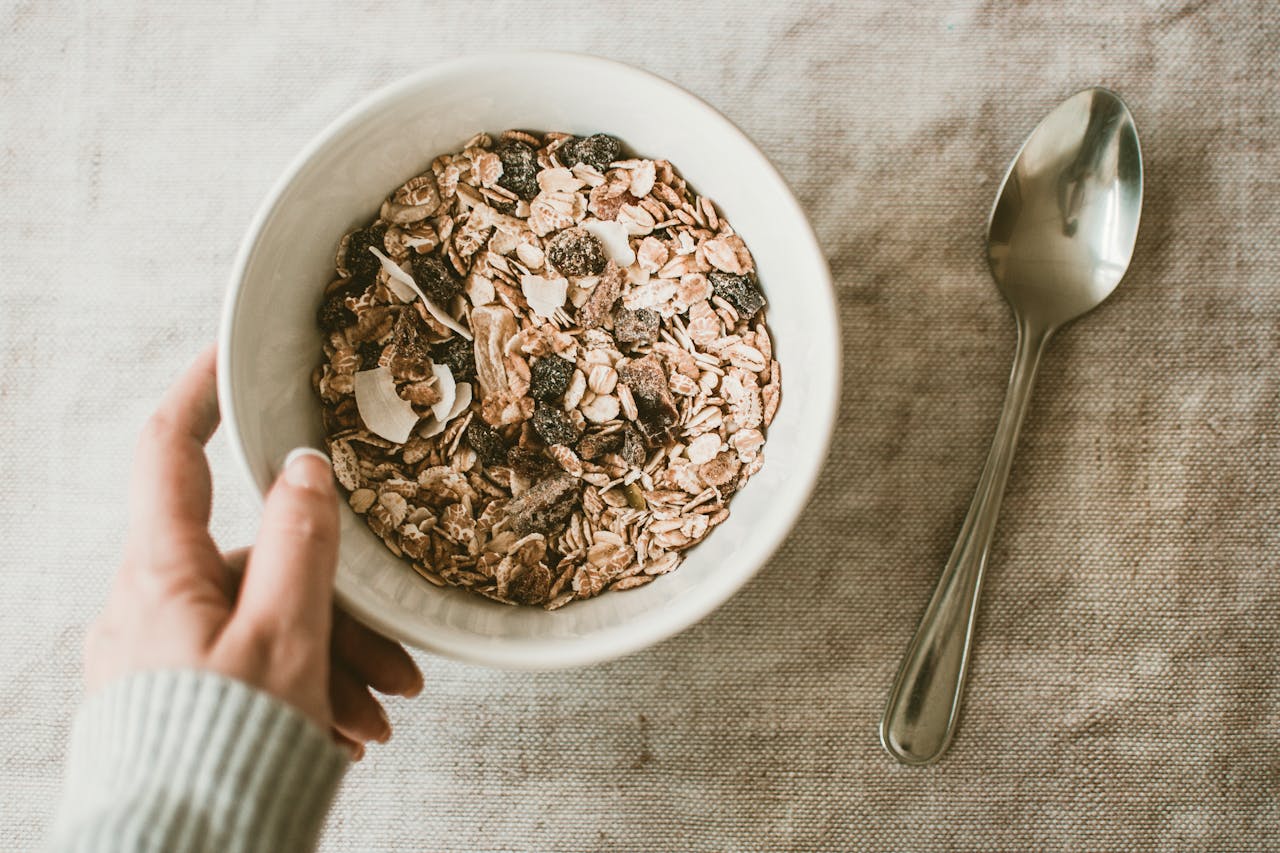What Are the Cereals with Least Calories? What Are the Good Ones for You?

Richard Schmidt is a dedicated intermittent fasting advocate and retention specialist with a deep pa...

With Fastic, millions of people have achieved their desired weight, overcome disease and regained their quality of life.
Cereals with the least calories include Cheerios, Fiber One, and Kellogg’s Corn Flakes. Ideally, you want to get cereals with 120 calories per serving or under. Plain or even some flavored whole grain and fiber-rich cereal varieties have the least calories. Usually, cereals without added sugars have comparatively fewer calories.
Can Cereals Help with Weight Loss?
Healthy cereals are primarily carbs, but those are good carbs as fiber composition is higher. Some cereals also pack a decent amount of protein. These nutrients are good for you, in general, but also if you’re trying to lose weight.
Although the cereal may not cause weight loss, it may help you shed some pounds by being in a calorie deficit. Low-calorie cereals without added sugars will give you the essential nutrients you need without taking up a big chunk of your daily calorie intake.
A systematic review of observational and trial studies linked cereal consumption in breakfast with lower body mass index. It found that frequent consumers of ready-to-eat cereals had a lower prevalence of obesity compared with those who consumed it less or not at all.
It’s important to note that not all cereals are created equal, and some varieties contain higher calories (due to nuts or sugar). Even if healthy, high-calorie cereals may not help you stay in a caloric deficit for weight loss.
To lose weight, it’s imperative to check your food and drink intake, especially when fasting. The best way to do that is with Fastic, an app that makes weight loss simple and efficient. You can intelligently track calories and macros, at the end of the day, how many calories you consume.
Types of Low-Calories Cereals
There are too many varieties of cereals today. The cereal aisle contains different types and brands, which makes finding healthy, low-calorie cereals challenging.
Knowing which types of cereals typically have the least calories can help you cut the noise and find a box that’s right for you.
Here are some good low-calorie cereal:
Whole-Grain Cereals: Whole-grain cereals are your best bet at consuming the least number of calories with the most fiber. These are also the least processed, so the healthiest of all varieties. They pack a powerful punch of nutrients without giving you too many calories. Oats, brown rice, bran, and wheat flakes are all used in whole-grain cereals.
Fiber-Rich Cereals: Most cereal varieties with a high fiber content typically have low calories (if they don’t have added sugars). High-fiber cereals can be whole grain or processed like Shreddies or Cheerios.
High-Protein Cereals: Some cereal varieties offer high protein content per serving. As these are catered toward diet-conscious consumers, they may have fewer calories than usual. However, some are highly processed, so they should be consumed cautiously.
How Many Calories in Low-Calories Cereals?
While there’s no rule about what makes a cereal low-calorie, generally, a cereal with 120 or fewer calories per serving can be considered low-calorie. This is compared to regular cereals with added sugar, which easily exceed 200 calories per serving.
Remember that the calories from cereals also depend on how many calories you need to consume in a day. If you’re trying to lose weight, you’d want to consume less than average calories. So, going with a low-calorie cereal with 120 or less calories will help reach that goal.
Remember, these calories are only for the cereal serving, not the additions you’ll make, like milk, yogurt, nuts, seeds, fruits, or honey. To keep calories in your bowl of cereal low, opt for other low-calorie ingredients like low-fat yogurt.

5 Cereal with Least Calories
Cereal variety is endless, and it comes from both international and local brands. Here are five popular cereals with the least calories that you can find in most markets:
Cereal | Calories (kcal) | Fiber (g) | Protein (g) | Sugar (g) |
Cheerios | 90 | 3 | 2 | 1 |
Fiber One | 90 | 18 | 3 | <1 |
Kellogg’s Corn Flakes/Wheat Flakes | 114/120 | 0.8/6 | 2/4 | 2.5/7 |
Forage Grain-Free Os | 120 | 5 | 4 | 6 |
Rice Chex | 160 | 2 | 3 | 3 |
Cheerios
The classic Cheerios are actually diet-friendly. The company offers a low-calorie, whole-grain option. They're a good source of fiber, and their protein content can be enhanced with milk and nuts.
A cup of Cheerios only has 90 calories, making it the least-calorie cereal from a major brand.
Fiber One
As the name suggests, this cereal is packed with fiber, making it a great choice for those looking to boost their fiber intake. Fiber One is often available in various flavors, including chocolate and cinnamon. So it’s not all bland. And you can make it delicious with fresh berries, seeds, and nuts.
A serving of Fiber One cereal has 90 calories, the same as Cheerios.
Kellogg’s Corn and All-Bran Wheat Flakes
Both Kellogg’s cornflakes and wheatflakes are low-calorie cereals. The latter is not the most delicious, but you can enhance its taste with low-calorie fruits. One cup of Kellogg’s Corn Flakes has 114 calories. One serving of Kellogg’s All-Bran Wheat Flakes, which is ¾ cup, has 120 calories.
Forage Grain-Free Os
For those following a grain-free option, Forage Grain-Free Os offer a nutritious alternative. These cereals are made with plant-based protein and are a good source of fiber. There are similar offerings from other brands too, so make sure to check the calories. These ones are also 120 calories per cup.
Rice Chex
These crispy rice puffs are a light and airy option for those seeking a low-calorie cereal. Rice Chex can be consumed with milk or fruit. If you have a gluten allergy, these Rice Chex cereals are the right choice for you. Rice Chex packs 160 calories in a one cup serving.
Pick the Right Cereal
Cereals are notorious for high added sugars. If you’re trying to lose weight (or even when you’re not) opt for cereals with minimal or no sugar. That will automatically bring down calories significantly. Make sure to read the nutrition label when searching for cereal with least calories. Try to stay under 150 calories per serving so your breakfast, with all the additions, doesn’t exceed 300 calories.
And you can easily track the calories by brand or type of cereal in the Fastic app. This makes it incredibly easy to manage caloric intake to shed weight.
With Fastic, millions of people have achieved their desired weight, overcome disease and regained their quality of life.
Take the Quiz